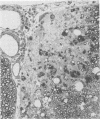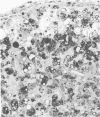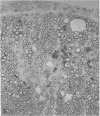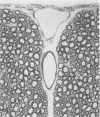Abstract
The present study demonstrated that the clinicopathological expression of the late demyelinating disease due to chronic central nervous system infection by Theiler's mouse encephalomyelitis virus was dependent, at least in part, on the strain of mouse used as host. A range of involvement was observed, with late disease being most severe in the SJL strain, intermediate in the CBA and C3H/He strains, and least in C57BL/6 mice. The lack of clinical signs in seven other inbred strains of mice indicates that their response to chronic infection was similar to C57BL/6 mice. SJL, CBA, C3H/He, and C57BL/6 mice all generated similar levels of neutralizing antibody. A correlation between the severity of late disease and central nervous system virus content was not demonstrated, which indirectly suggests an immunopathological rather than a cytolytic mechanism of myelin injury during the late disease period. Finally, in addition to being more extensive, SJL demyelinating lesions contained a disproportionately large number of macrophages compared with those of similar lesions in CBA and C3H/He mice.
Full text
PDF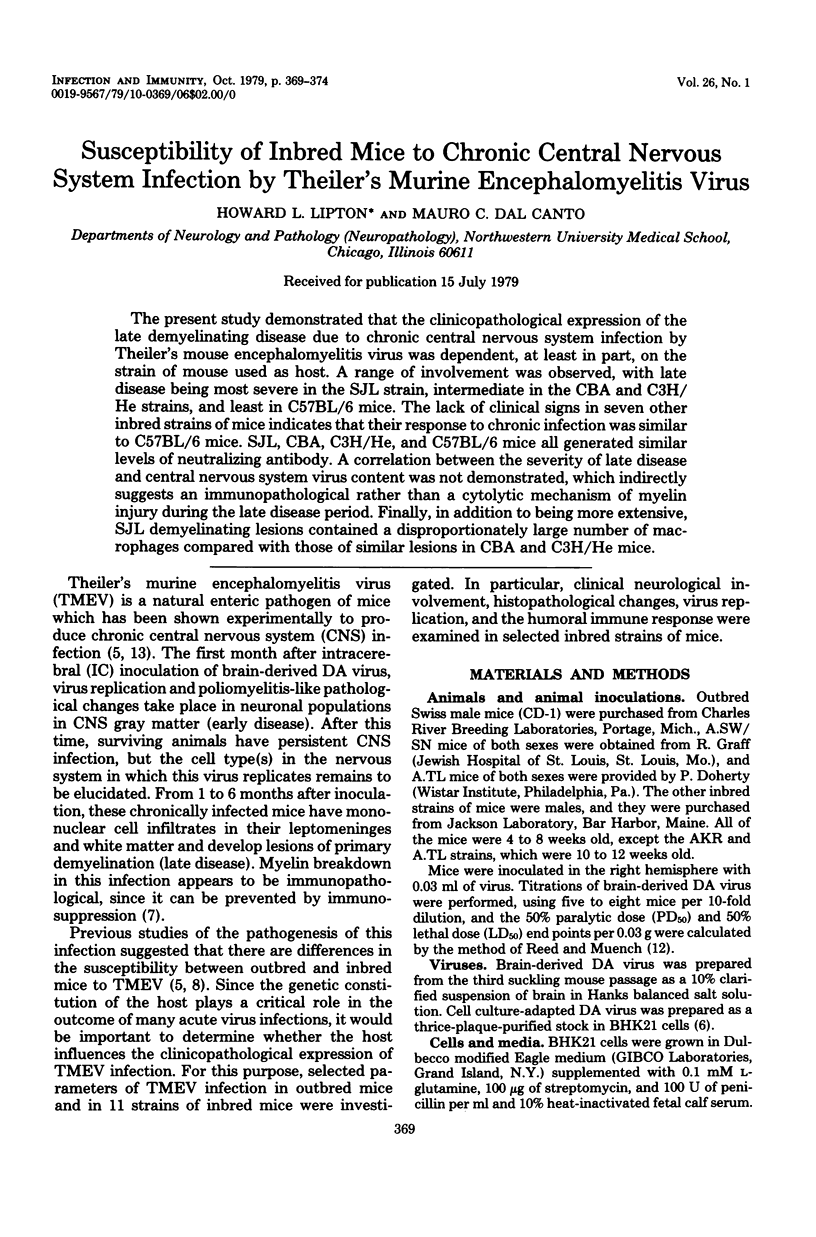
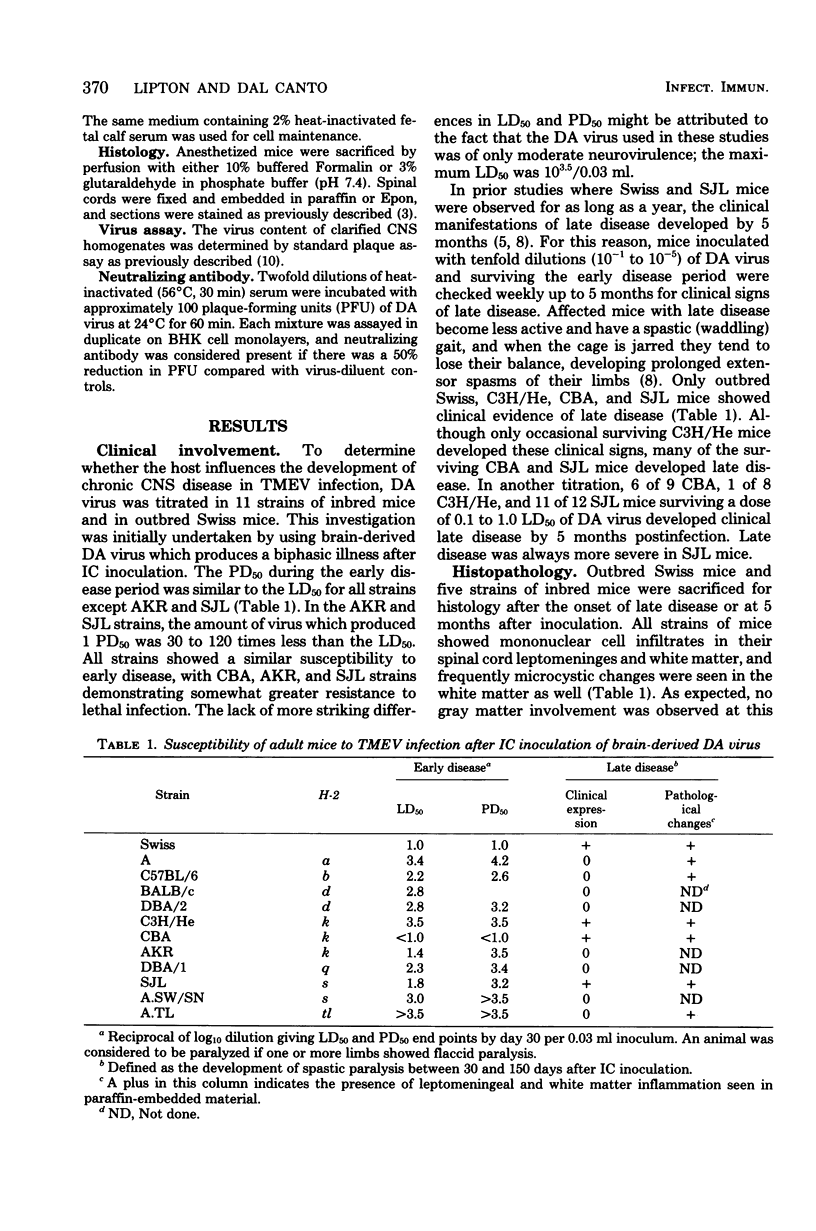
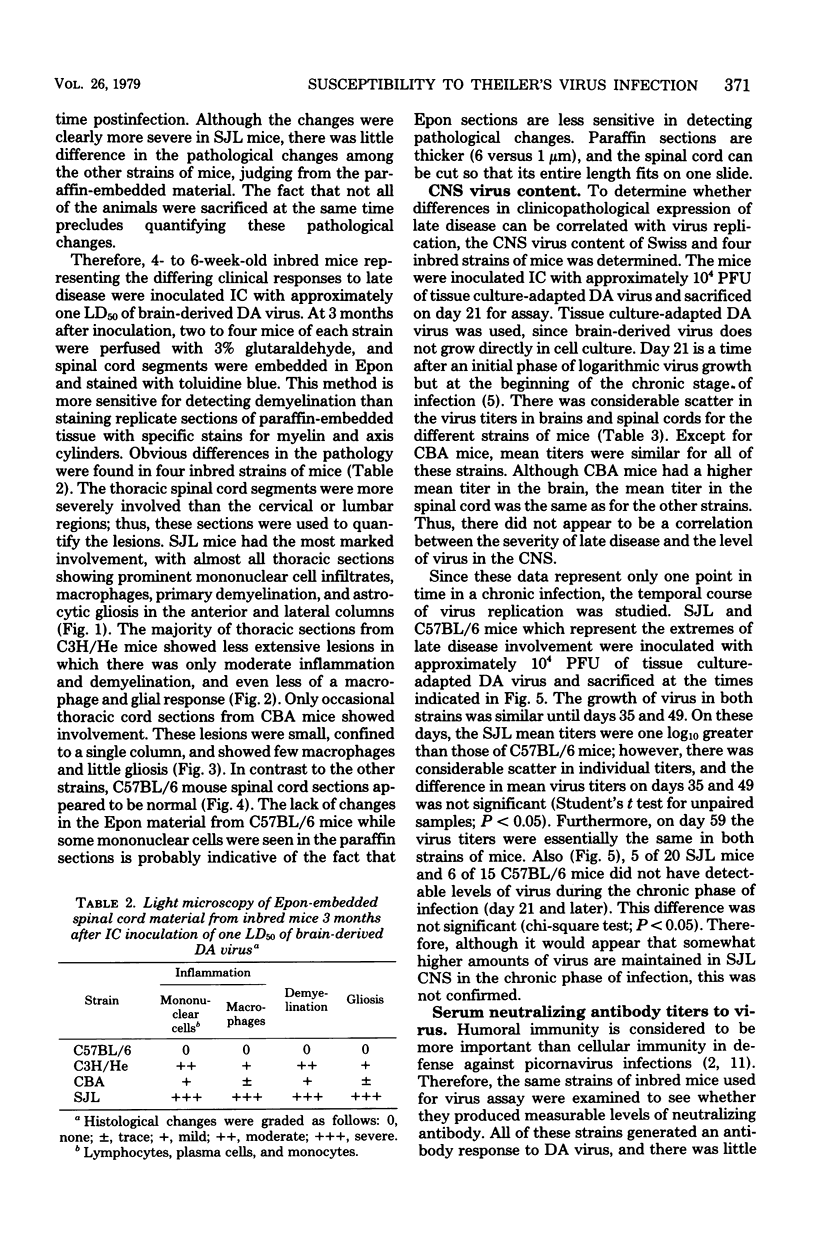
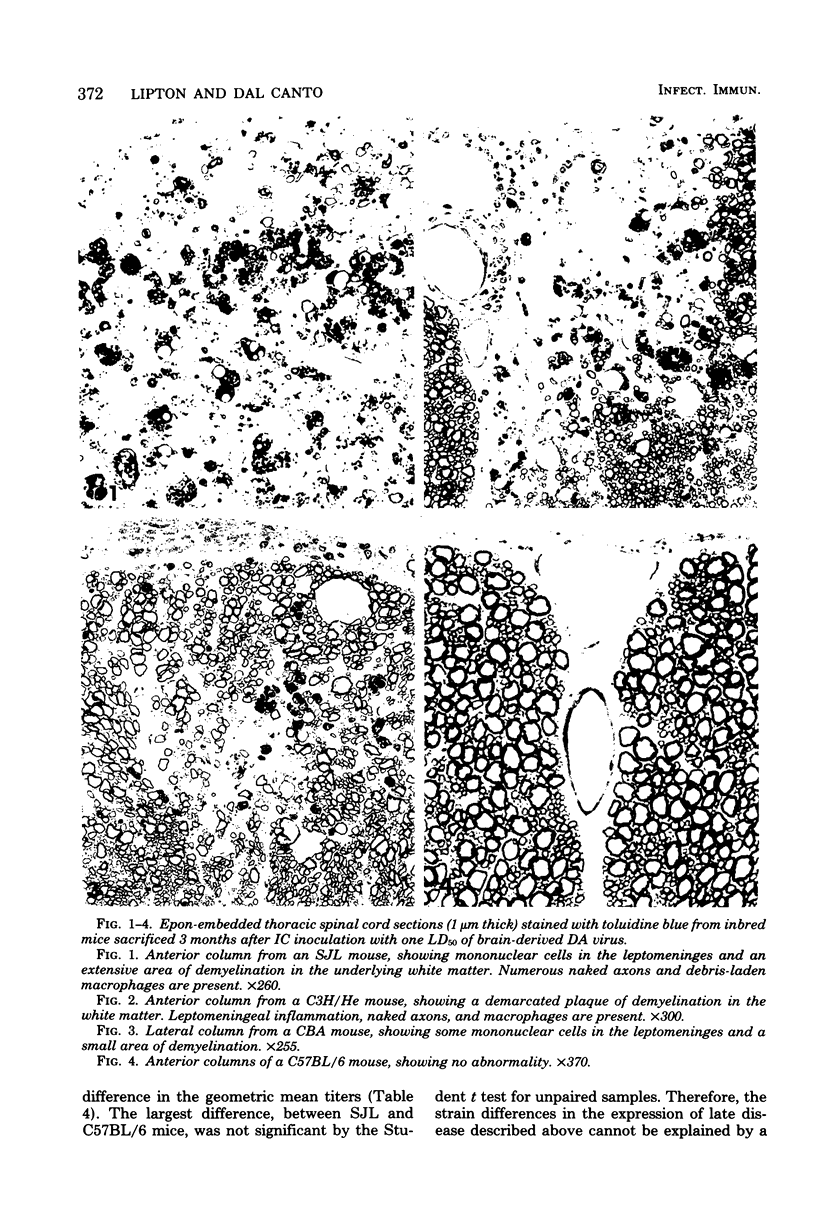
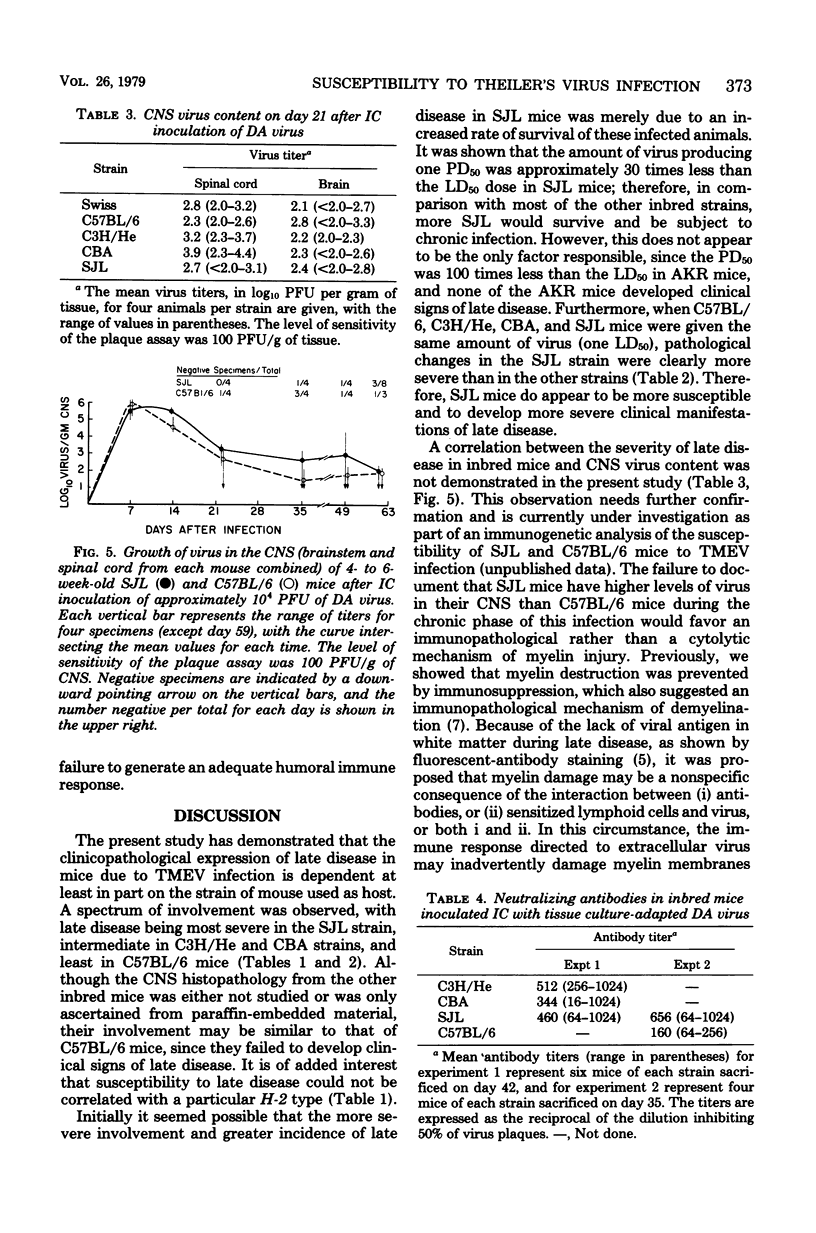
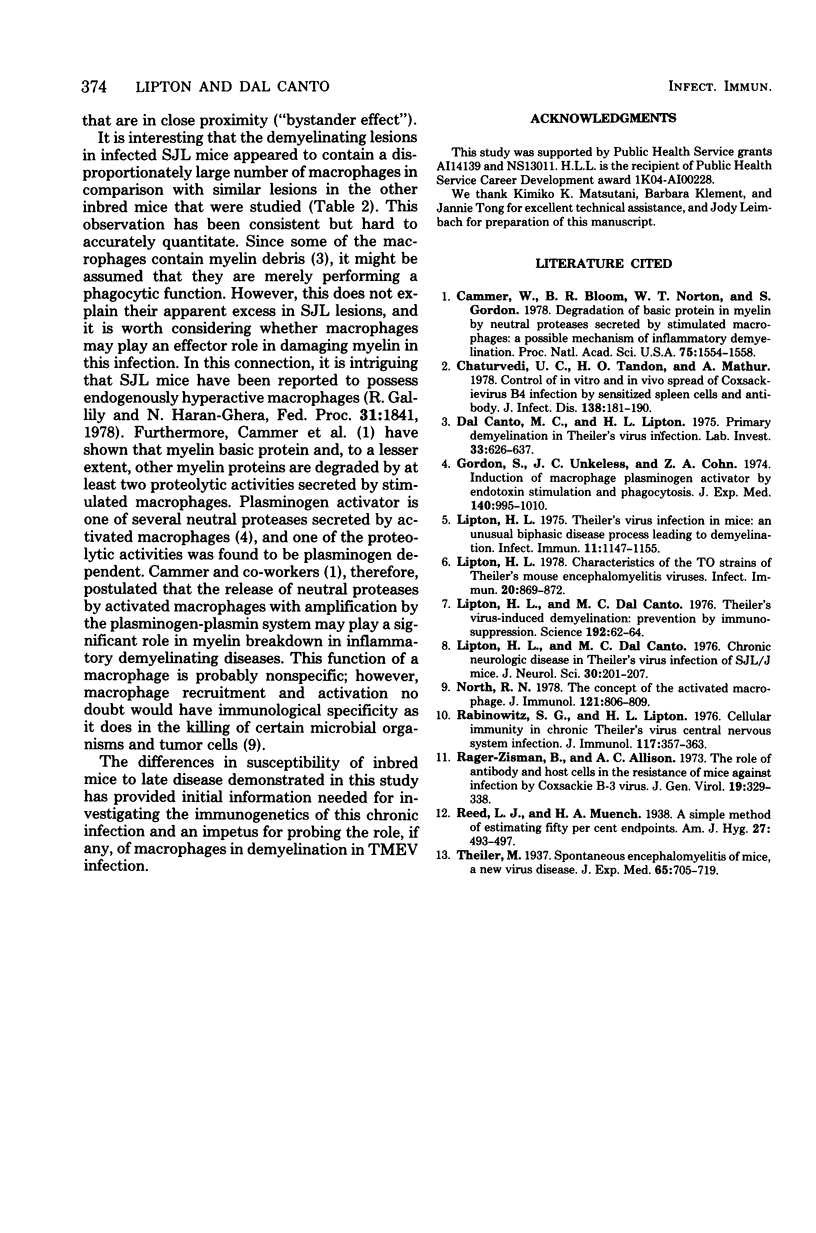
Images in this article
Selected References
These references are in PubMed. This may not be the complete list of references from this article.
- Cammer W., Bloom B. R., Norton W. T., Gordon S. Degradation of basic protein in myelin by neutral proteases secreted by stimulated macrophages: a possible mechanism of inflammatory demyelination. Proc Natl Acad Sci U S A. 1978 Mar;75(3):1554–1558. doi: 10.1073/pnas.75.3.1554. [DOI] [PMC free article] [PubMed] [Google Scholar]
- Chaturvedi U. C., Tandon H. O., Mathur A. Control of in vitro and in vivo spread of coxsackievirus B4 infection by sensitized spleen cells and antibody. J Infect Dis. 1978 Aug;138(2):181–190. doi: 10.1093/infdis/138.2.181. [DOI] [PubMed] [Google Scholar]
- Dal Canto M. C., Lipton H. L. Primary demyelination in Theiler's virus infection. An ultrastructural study. Lab Invest. 1975 Dec;33(6):626–637. [PubMed] [Google Scholar]
- Gordon S., Unkeless J. C., Cohn Z. A. Induction of macrophage plasminogen activator by endotoxin stimulation and phagocytosis: evidence for a two-stage process. J Exp Med. 1974 Oct 1;140(4):995–1010. doi: 10.1084/jem.140.4.995. [DOI] [PMC free article] [PubMed] [Google Scholar]
- Lipton H. L. Characterization of the TO strains of Theiler's mouse encephalomyelitis viruses. Infect Immun. 1978 Jun;20(3):869–872. doi: 10.1128/iai.20.3.869-872.1978. [DOI] [PMC free article] [PubMed] [Google Scholar]
- Lipton H. L., Dal Canto M. C. Chronic neurologic disease in Theiler's virus infection of SJL/J mice. J Neurol Sci. 1976 Nov;30(1):201–207. doi: 10.1016/0022-510x(76)90267-7. [DOI] [PubMed] [Google Scholar]
- Lipton H. L., Dal Canto M. C. Theiler's virus-induced demyelination: prevention by immunosuppression. Science. 1976 Apr 2;192(4234):62–64. doi: 10.1126/science.176726. [DOI] [PubMed] [Google Scholar]
- Lipton H. L. Theiler's virus infection in mice: an unusual biphasic disease process leading to demyelination. Infect Immun. 1975 May;11(5):1147–1155. doi: 10.1128/iai.11.5.1147-1155.1975. [DOI] [PMC free article] [PubMed] [Google Scholar]
- North R. J. The concept of the activated macrophage. J Immunol. 1978 Sep;121(3):806–809. [PMC free article] [PubMed] [Google Scholar]
- Rabinowitz S. G., Lipton H. L. Cellular immunity in chronic Theiler's virus central nervous system infection. J Immunol. 1976 Aug;117(2):357–363. [PubMed] [Google Scholar]
- Rager-Zisman B., Allison A. C. The role of antibody and host cells in the resistance of mice against infection by coxsackie B-3 virus. J Gen Virol. 1973 Jun;19(3):329–338. doi: 10.1099/0022-1317-19-3-329. [DOI] [PubMed] [Google Scholar]



